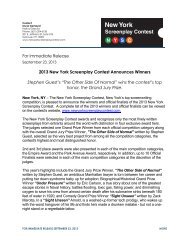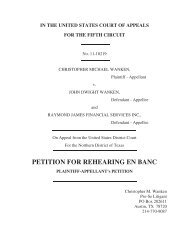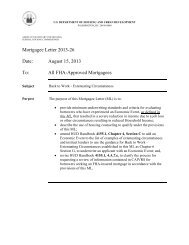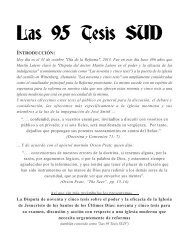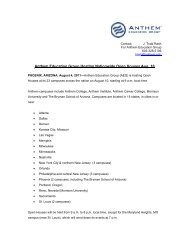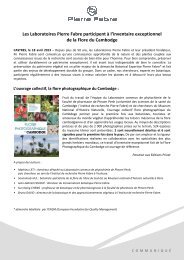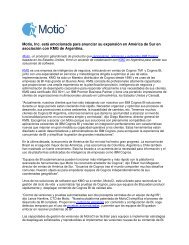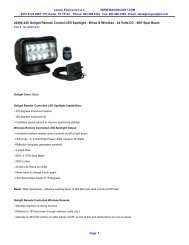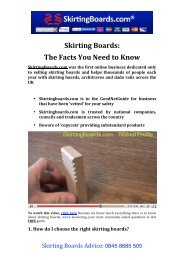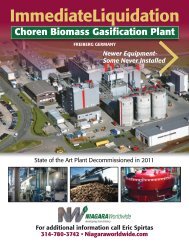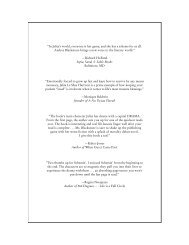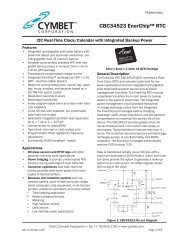The Connector Website Model New Implications for Social ... - PRWeb
The Connector Website Model New Implications for Social ... - PRWeb
The Connector Website Model New Implications for Social ... - PRWeb
Create successful ePaper yourself
Turn your PDF publications into a flip-book with our unique Google optimized e-Paper software.
structure consisting of the website and its community, users have a higher incentive to<br />
seek out User 4.8 rather than User 2.2 <strong>for</strong> online communications or transactions. 66 User<br />
4.8’s social capital is actually visible and come across as more attractive to others.<br />
<strong>The</strong>re are qualitative means <strong>for</strong> gauging trust and reputation on connector<br />
websites. Reviews (also called testimonials, bulletins, and recommendations) exist on<br />
connector such as Judy’s Book, Friendster, MySpace, and Tribe.net. This user-generated<br />
text is an explicit cue. More subtle signals are found on a given user’s profile page, such<br />
as the appearance of the profile page; disclosed frequency of a user’s online activity;<br />
quantity and quality of listed friends/contacts; response quality in the profile’s categories;<br />
and user postings or comments to message boards. Such in<strong>for</strong>mation can signal personal<br />
characteristics in much the same way we get impressions from email. 67 It is reasonable<br />
to think that a connector’s online community would like these various explicit and<br />
implicit user cues to be as valid and reliable as possible. If this occurs, trust should<br />
develop between users, and between the community and the website. If there is little<br />
validity and reliability in these cues, user flight to a competing connector should likely<br />
occur over time. Well-constructed accountability mechanisms probably temper trend<br />
volatility and add to a site’s stickiness.<br />
Although connectors have had a measurable impact in a variety of social areas<br />
(commerce and trading; dating; teenage and collegiate socializing; career networking), in<br />
the future the model will likely be used <strong>for</strong> more specific interests and topics in which<br />
people are regularly engaged or <strong>for</strong> people in life transition phases. <strong>The</strong>mes could<br />
organize around occupations, education, healthcare, parenting, religious or spiritual<br />
28



